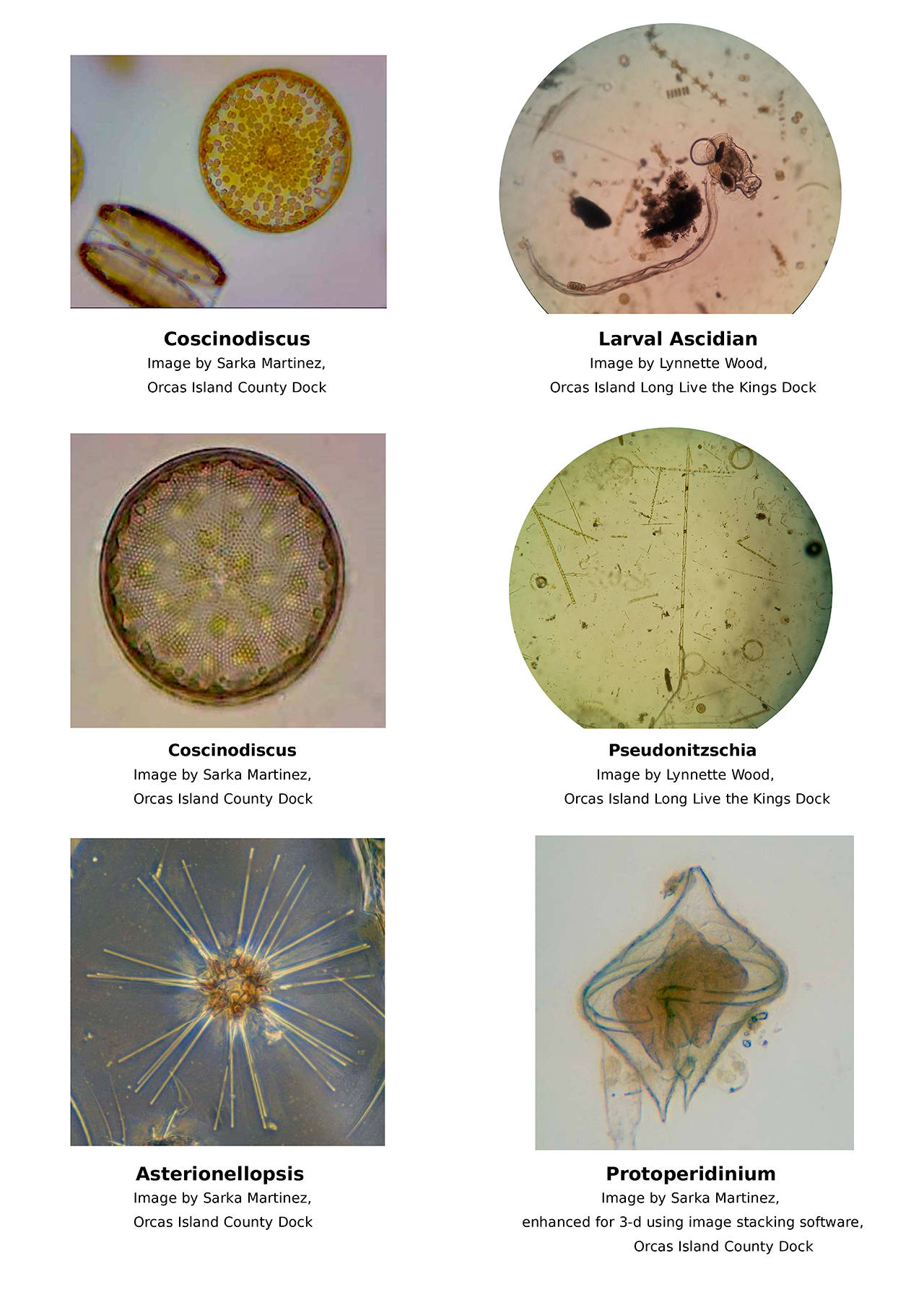by Lynnette Wood, Ph.D.
Four Orcas Island volunteers are currently monitoring weekly for toxic plankton as part of a Puget Sound-wide SoundToxins program. This program, funded until August 2018 by the National Oceanic and Atmospheric Administration’s Monitoring and Event Response program, through a grant to the Northwest Fisheries Science Center and Washington Sea Grant, provides very early warning of potential harmful algal blooms (or HABs) before they begin to affect shellfish or, in some cases, before the associated toxins even show up in shellfish flesh.
The human illnesses caused by eating shellfish affected by HABs can be debilitating or even fatal. But thanks to programs like SoundToxins, such occurrences are much rarer today than in the past. SoundToxins volunteers sample 35 sites throughout the Puget Sound and the Strait of Juan de Fuca, but there are currently just two SoundToxins sampling sites in all of San Juan County, both on Orcas Island. One is at the Eastsound county dock and the other is associated with the Long Live the Kings salmon hatchery. Both sites have been continuously monitored for about five years. The unofficially named “Orcas Plankton Team” currently consists of Lynnette Wood, Leslie Hutchinson, Sarka Martinez and Ellen Winter.
From March through September, the team collects weekly samples from the two sites. (Sampling is bi-weekly during the winter.) The team members analyze the samples for salinity, temperature, phytoplankton species, and marine biotoxins. The team views the samples through a SoundToxins-provided microscope, identifying all the phytoplankton species present but focusing on four target species. Three of these, Pseudo-nitzschia species, Alexandrium catenella, and Dinophysis species, are associated with amnesic, paralytic, and diarrhetic shellfish poisoning, respectively. The fourth, Heterosigma akashiwo, is associated with fin-fish mortality.
While it is normal for biotoxin-producing phytoplankton to be present in marine waters, they are usually at very low concentrations that pose no problems. However, when “blooms” occur the concentration increases dramatically. The more phytoplankton the shellfish eat, the more biotoxin they accumulate. When people eat these shellfish, they can become seriously ill. When the number of toxin-producing phytoplankton returns to normal levels, the shellfish eventually flush the toxins from their systems making them safe to eat again, but, depending on the species, this can take several days, many months or even years. It is important to note that the toxins cannot be “cooked out” of the shellfish.
The value of the SoundToxins monitoring is a very early warning of potential problems. If the population of one or more of the three types of phytoplankton associated with human health are observed to be increasing or at critical levels, volunteers immediately alert SoundToxins. The alert can come even before the situation reaches one of a “bloom” and well before the toxins show up at all in shellfish testing. In 2016, SoundToxins volunteers throughout the Puget Sound sent more than 300 such alerts. In 2015, one of these alerts resulted in the recall of four truckloads of shellfish, which had already been dispatched for retail and wholesale delivery, loaded with what turned out to be tainted mussels.
The fourth species, Heterosigma akashiwo, is recognized as having been responsible for salmon die-offs since the 1960s. A 1990 bloom in central Puget Sound killed 1.3 million commercially raised fish valued at $5 million, as well as the endangered species White River spring Chinook broodstock. Young salmon are particularly susceptible, which is why weekly monitoring is particularly important at the location where these young ones are released from Orcas Island’s Glenwood Springs hatchery. By drawing on volunteers like those of the Orcas Plankton Team, SoundToxins provides particularly cost-effective monitoring that links state managers, tribal harvesters, and commercial fish and shellfish farmers. The early warning provided by SoundToxins helps minimize risks to human health and also helps to reduce economic losses to Puget Sound fisheries.
Lots of plankton pictures can be found on Facebook at Orcas Island Phytoplankton Survey Team, while more information about the program is at SoundToxins.org. A continuously updated map of shellfish beach closures is at https://fortress.wa.gov/doh/eh/maps/biotoxin/biotoxin.html.




